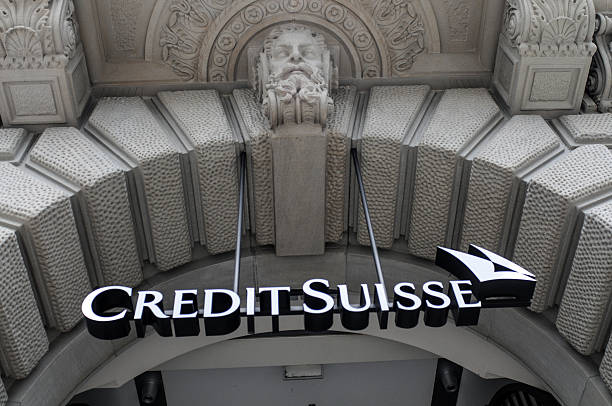
By Satyajit Das
The Fed and other central banks face a difficult choice: Keep rates high to control inflation or loosen monetary policy to stabilize financial markets.
Major financial market regime changes typically take place in stages. The crypto meltdown in 2022, for example, incurred about $2 trillion of losses. The technology meltdown followed, with losses of about $5 trillion, the U.K. government bond (gilt) crisis ($500 billion in losses), plus an ongoing emerging market debt crisis.
These problems have now reached the world’s financial system, with U.S., European and Japanese banks losing around $460 billion in market value so far in March alone.
The immediate cause is the rapid increase in official interest rates in the U.S. and other major global economies. The true cause is the unwinding of an economic and financial structure built upon an artificially low cost of money, which gave rise to the “everything bubble” and its leveraged speculation.
Higher rates and losses on securities have significantly weakened the global banking system.
The banking system’s problems may not be over. The collapse of Silicon Valley Bank SIVB, highlighted the interest-rate risk of purchasing long-term securities financed with short-term deposits and the susceptibility to a liquidity run. Banks globally face falling customer deposits (projected to decline in the U.S. by up to 6%) and losses on holding of securities ( (unrealized losses at FDIC insured U.S. banks exceed $600 billion at end of 2022). A 10% loss on bank bond holdings would, if realized, decrease bank shareholder capital by around 25%.
When other interest-sensitive assets are included, one estimate puts the loss for U.S. banks alone at $2 trillion. Globally, the total unrealized loss might be two to three times that. The fact is that higher rates and losses on securities have significantly weakened the global banking system.
This is before loan losses. Higher rates will affect interest sensitive sectors such as real estate, non-essential consumer industries, and highly leveraged companies. Default rates are projected to rise globally, further reducing earnings and capital buffers.
Read: SVB’s collapse exposes the Fed’s massive failure to see the bank’s warning signs
There are several other areas of concern.
First, over recent years, investment has flowed into venture capital and early/ late stage start-ups. The driver was that abundant capital was itself a strategy. Many unprofitable start-ups require near-continuous investment. The problem is that new inflows into private equity have declined by around two-thirds from the 2021 level of around $600 billion as a result of large losses. While some of these companies have sufficient funds to continue operations, many will be forced to close.
Second, since the global financial crisis in 2008, regulatory restrictions on traditional banks have shifted higher risk or more complex lending or trading into the shadow banking system — non-bank financial institutions including insurance companies, pension funds, mutual funds, hedge funds, family offices and specialty financiers. The Bank of International Settlements estimates that $227 trillion was held in these accounts in 2021, almost half the size of the global financial sector and an increase from 42% in 2008.
The trouble is that information about and regulation of these entities is limited. The September 2022 crisis in U.K. government bonds, triggered by liability-driven investing strategies of the British-defined benefit pension plan, highlights the potential risk here.
Rapidly growing private markets, part of the shadow banking complex, invest in unlisted equity and debt, infrastructure and real estate assets. There now is a significant gap between private investment values and equivalent public equivalents. Termed “volatility laundering,” this is achieved by generous assumptions, internal sales or funding (raising concerns about conflicts of interest), and reliance on opaque models. Unpleasant revaluation shocks are not impossible.
Mortgage backed securities, as well as commercial real estate and auto-loan securitizations, will be affected by declines in asset values and defaults.
Third, structured products represent another area of risk.
Collateralized Loan Obligations (CLO), for example, are exposed to defaulted on low-rated debt used in private equity. Non-agency mortgage backed securities, as well as commercial real estate and auto-loan securitizations, will be affected by declines in asset values and defaults. While higher-rated securitization tranches may not suffer cash losses, downgrades and mark-to-market losses are likely. Where used as collateral for borrowing, margin calls may require sales which would realize losses.
Investors own large volumes of bank hybrid capital securities, which regulators can force to be written down or converted into equity at their option. Potential losses could be significant.
Read: SVB’s failure proves the U.S. needs tighter banking regulations so that all customers’ money is safe
Finally, derivatives may prove another familiar source of instability. These instruments provide exposure to prices and leverage (especially via the ubiquitous carry trade). High volatility across equity, currencies and interest rates will create higher margin requirements, triggering cash needs. The risk of unexpected trading losses and disorderly and uncontrolled liquidation cannot be discounted.
Financial weaknesses will inevitably feed back into the real economy. Defaults, lack of investment and slowdown in the supply of credit will lead to an economic slowdown, which will drive new legs of this financial-market reset.
All of which leaves the Federal Reserve and other central banks trapped between the need to keep rates high to control inflation and the pressure to loosen monetary policy to prevent financial instability.
Satyajit Das is a former banker and author of A Banquet of Consequences – Reloaded ( 2021) and Fortunes Fools: Australia’s Choices (March 2022)
